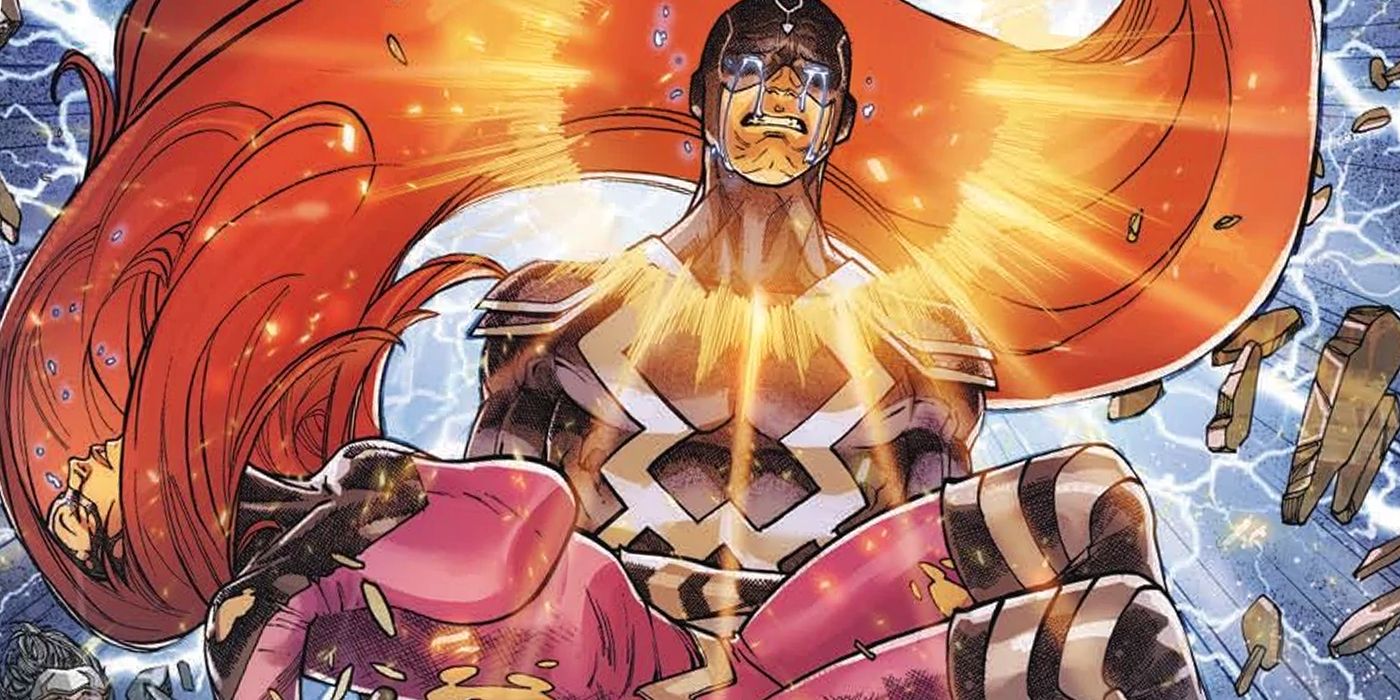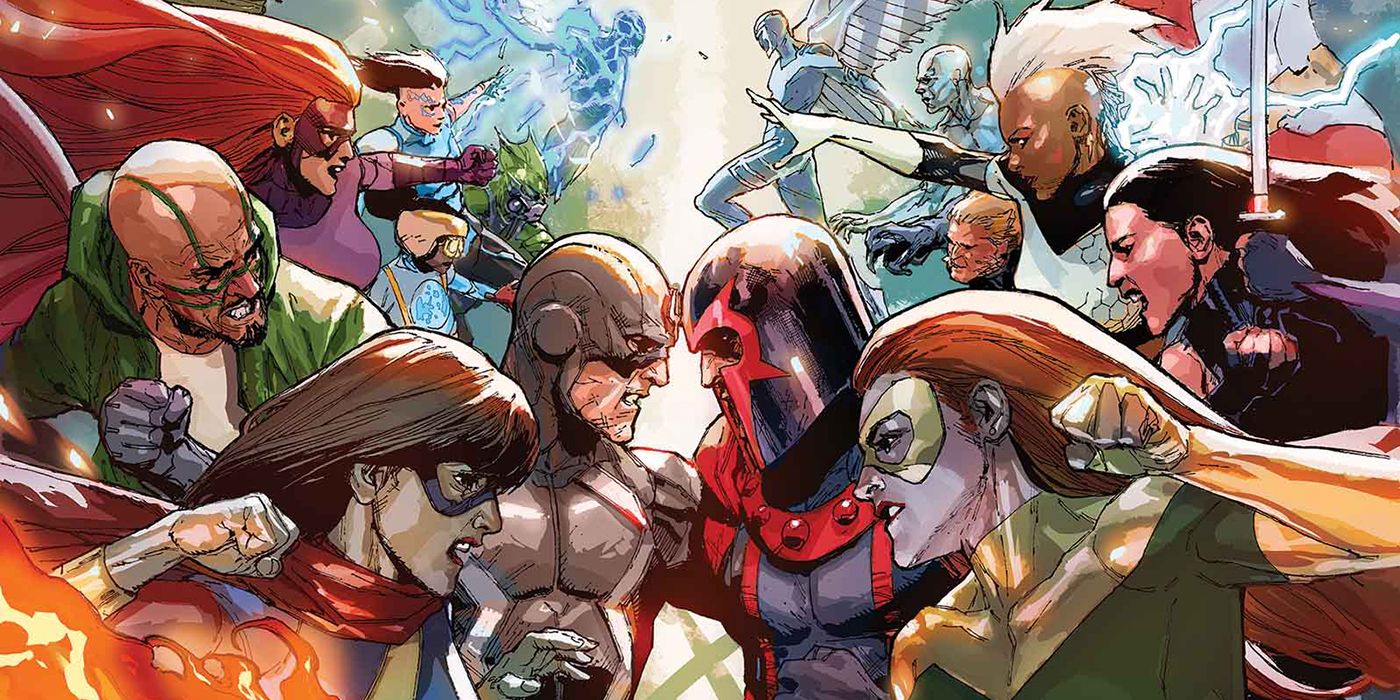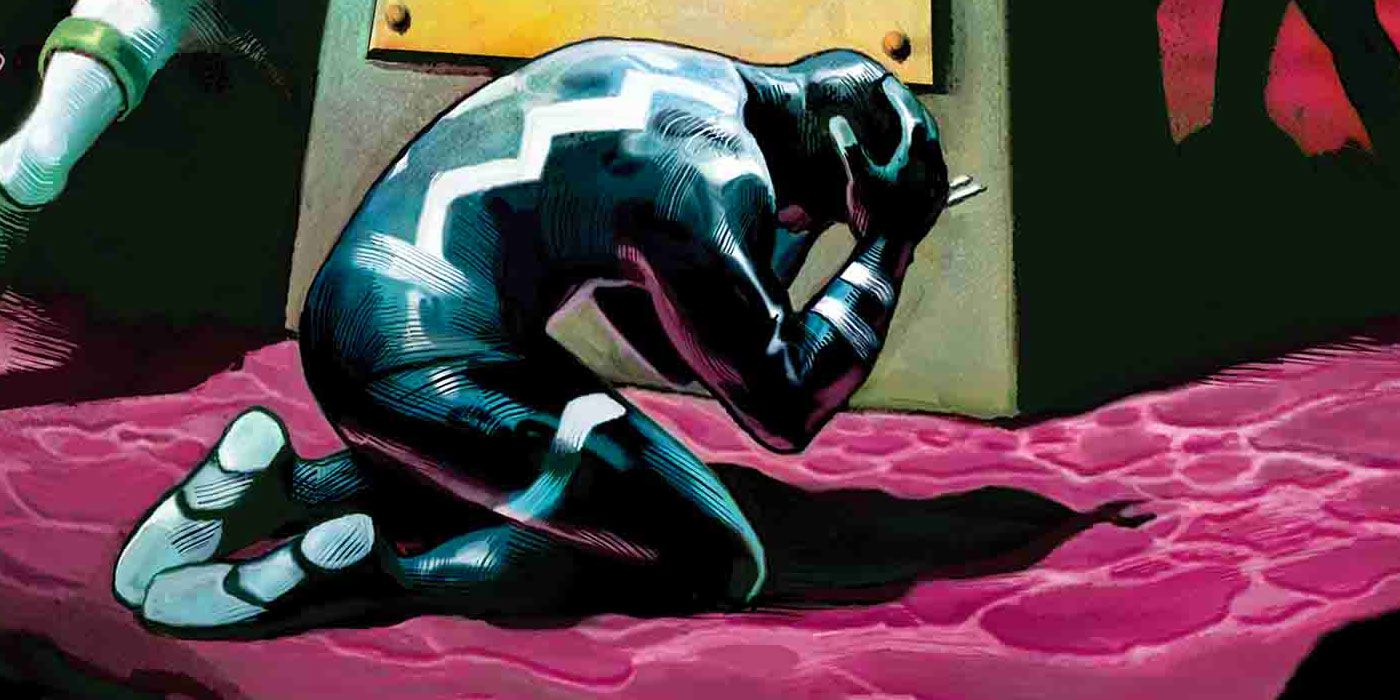One of the biggest misfires from Marvel Comics in recent times was the attempted push of the Inhumans into the mainstream. The decision had a number of factors behind it, most notably the fact that at the time, Fox Studios held the movie rights for the Fantastic Four and the X-Men. Thus, Inhumans, once spinoff characters of the Fantastic Four, were made to be stand-ins for the mutants, but things didn't go as Marvel had likely planned.
Briefly ubiquitous throughout Marvel's publishing line, the eventually maligned Inhumans are nowhere to be found as niche as they were years ago. Here's a look back at their controversial rise to prominence, what happened afterward and how the Inhumans of Attilan have once again become an afterthought in the greater Marvel Universe.
Behold... the Inhumans!
The rise of the Inhumans began with the 2013 storyline Infinity, the conclusion of which saw the release of Terrigen Mists across the Earth. This affected the many seemingly normal humans who in fact had dormant Inhuman DNA in their genetics, activating their Terrigenesis and giving them Inhuman powers.
Medusa, wife of Black Bolt and queen of the Inhuman race made her species' presence known, also hoping to gather and protect the "NuHumans" who had recently been transformed by the Terrigen Mists. This saw the Inhumans play a key role in Civil War II, where an Inhuman named Ulysses was desired due to his precognitive abilities.
Sadly for the X-Men, the Terrigen Mists that continued to saturate the Earth were also toxic to mutants, potentially making the planet insalubrious to an entire species. This caused a rift between the Inhumans and the mutants, leading to Inhumans vs. X-Men. While this paved the way for the introduction of Kamala Khan's beloved Ms. Marvel, this particular plot point and many of the controversial decisions surrounding it drove many fans to dislike the Inhumans and their newest members, especially since it appeared to happen at the expense of the far more beloved X-Men.
Death of the Inhumans
The Inhumans' push had several books come out of it, with some of them more important than others. Relatively standalone titles like Ms. Marvel and Moon Girl & Devil Dinosaur were only tangentially related to the Inhumans but introduced lastings parts of the Marvel Universe. However, several other Inhumans comic books played right into the new status quo of NuHumans and the once esoteric Inhuman Royal Family coming into prominence.
These books included Inhuman, All-New Inhumans, Inhumanity, Mosaic, and Uncanny Inhumans. Again, in the case of the latter especially, the use of sobriquets usually associated with the X-Men line was not unnoticed. The rise of the Inhuman population also made them something of a hated and feared species, in an obvious attempt to crib what made the X-Men so popular. Some of these books deal with individual characters like Mosaic dealing with the revelation that he's an Inhuman, while others were team books based on the usual Inhuman realm of cosmic stories.
The Inhumans' time in the sun came to an end in 2018 with the storyline Death of the Inhumans. The storyline involved a Kree-engineered Inhuman killing off most of their species in order to force them into line. The result was that many of the Inhumans, namely the NuHumans, were killed off, with stories since then barely even acknowledging their existence.
It remains to be seen if the Inhumans will ever be put back into a prominent light, especially with the X-Men line once again being the premier series at Marvel. The Inhuman Royal Family is mostly still intact, and New Attilan, the home of the Inhumans, also remains. The NuHumans themselves, however, appear to already be forgotten by the Marvel Universe as a whole.



